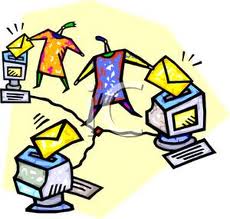 After more than 60 posts to this blog over the last few months, I’ve decided that many of you are probably tired of hearing me pontificate day-in-and-day-out. So, this week I am changing things up a little bit. Last week I launched an anonymous online survey via various social media channels and my email address book. I’ve picked four really awesome responses to share with you this week that I think provide excellent lessons for non-profit and fundraising professionals. Enjoy!!!
After more than 60 posts to this blog over the last few months, I’ve decided that many of you are probably tired of hearing me pontificate day-in-and-day-out. So, this week I am changing things up a little bit. Last week I launched an anonymous online survey via various social media channels and my email address book. I’ve picked four really awesome responses to share with you this week that I think provide excellent lessons for non-profit and fundraising professionals. Enjoy!!!
Again … the survey was anonymous because I wanted the truth, the whole truth and nothing up the truth. Here is what the today’s highlighted survey respondent said:
Question: Using the comment box below, please write a paragraph or two answering some of the following questions. Of the charities to whom you currently donate money, which one is your favorite? How did you first learn about this charity? Why did you make that first contribution? Why are you still contributing? How do you know that your contribution is making a difference? What does the charity do to demonstrate it is having an impact?
Answer: My favorite charity is the Wounded Warrior Project. They came to Bethesda Naval Hospital when my son was injured and that is how I heard of them. I see what they do for other soldiers and marines, and I know my money will directly help them and their families. This organization helps not only the soldiers and marines, but they help the caregivers of the families by sending them on trips to network with other injured marines families. They also, send the caregivers to workshops (ie writing workshops, learning to start small business, etc). Then they get the wounded together for outings like fishing tournaments, sky diving events and biking events so that the wounded get out and network themselves. This is a great organization!
Question: Understanding that these are tough economic times and no donor’s contribution ever should be taken for granted, what does your favorite charity need to do (or show you) in order to renew your support and/or increase the size of your contribution?
Answer: When I get involved in an organization, it is usually because someone I know has benefited from it. I see first hand what this organization has done. I guess it would be great to have a website to see where the money is going. The wounded warrior project had some of the wounded soldiers speak and that has made a huge impact on me. Hearing first hand what a difference an organization made in someone’s life helped me see where my money is going.
Hmmm … can you this donor’s passion for their charity’s mission? I think I have goose bumps … that is awesome!!! Here is what struck me about these responses:
- I am reminded of how many people donate to a charity because they were personally touched by that charity’s mission. I cannot tell you how many times I talked to an alumnus of a Scouting program or a Boys & Girls Club and found they were chomping at the bit to “give back” to a program that gave them so much. I can only imagine how much more powerful that must be for veterans and their families.
- In this donor’s second response, I am reminded of the power of testimonials. Donors want to see “return on investment” and hearing directly from the people whose lives were changed is more powerful than any data point you share.
How does your organization reach out to alumni? Do you use testimonials as part of your stewardship program? What successes or challenges have you experienced? Please use the comment box below to share because we can learn from each other.
Here is to your health!
Erik Anderson Owner, The Healthy Non-Profit LLC eanderson847@gmail.com http://twitter.com/#!/eanderson847 http://www.facebook.com/eanderson847 http://www.linkedin.com/in/erikanderson847



